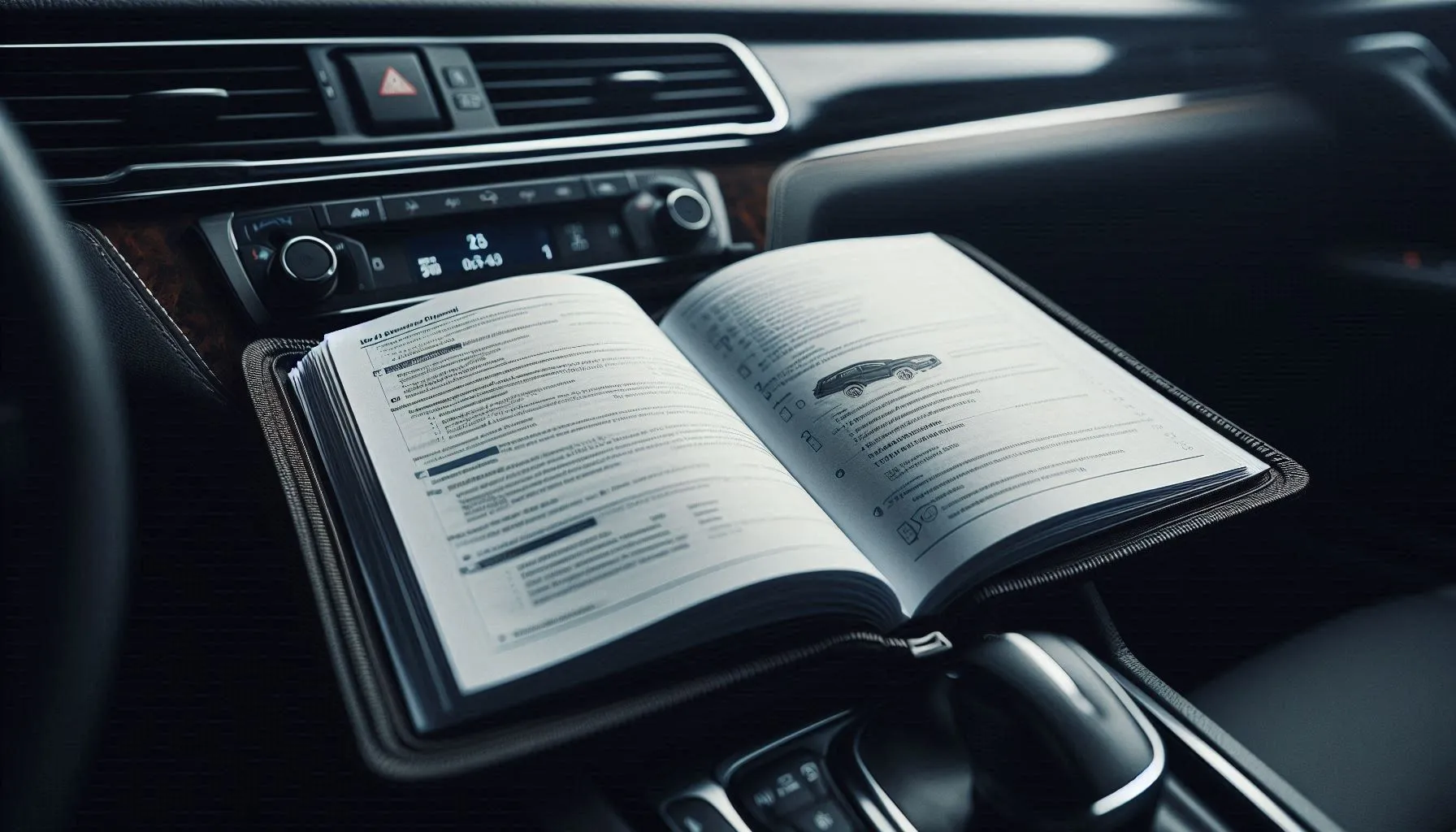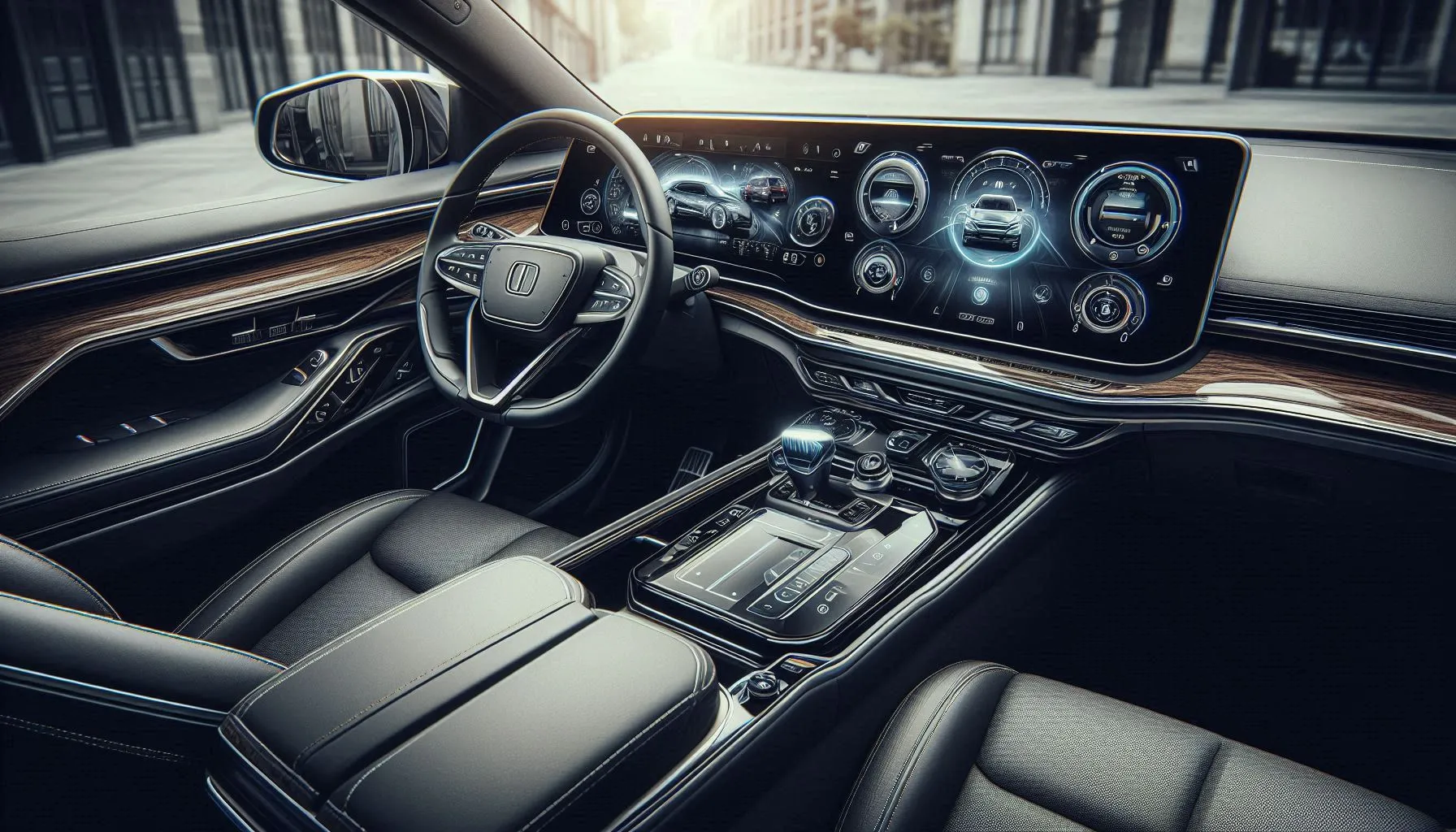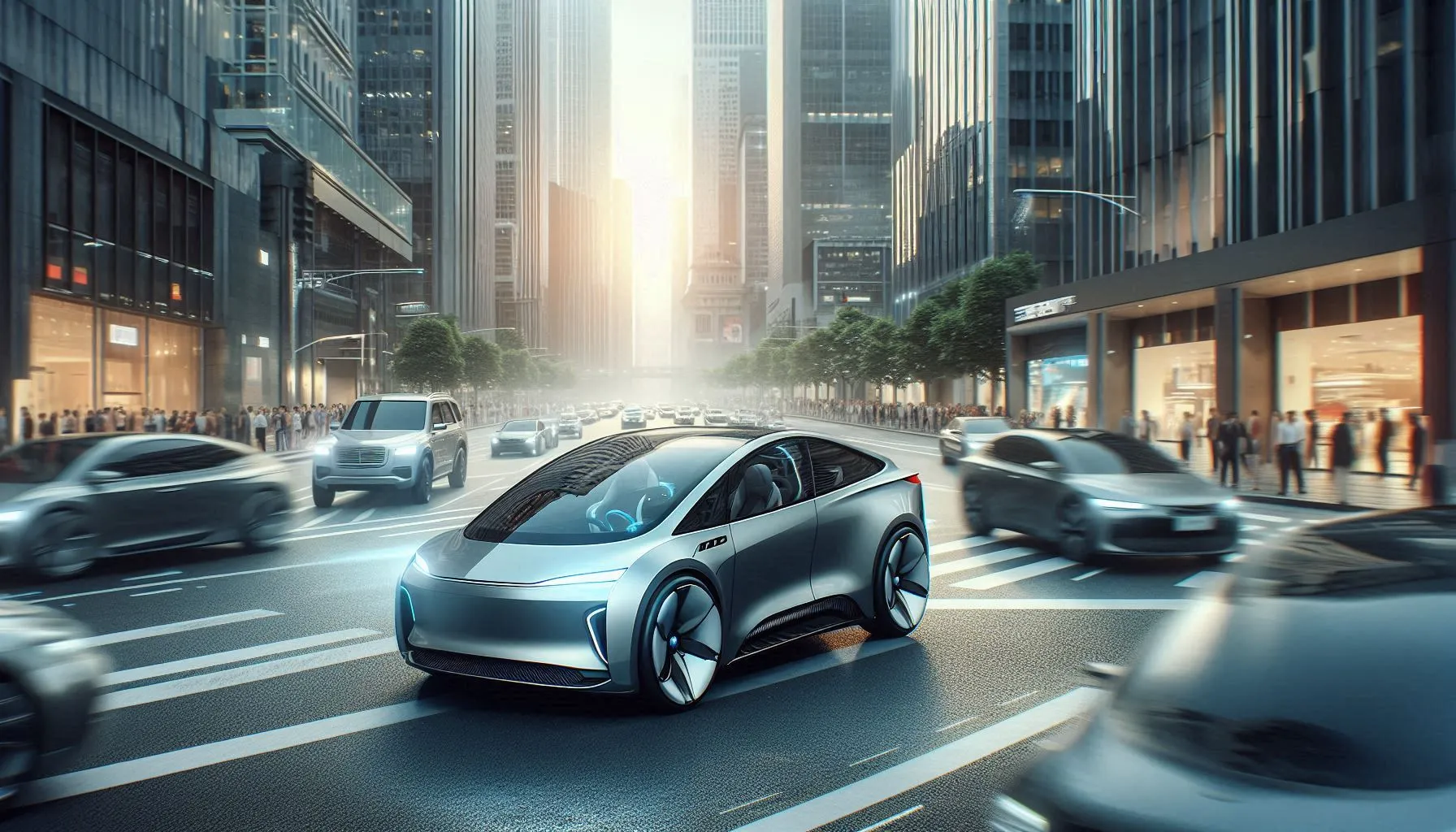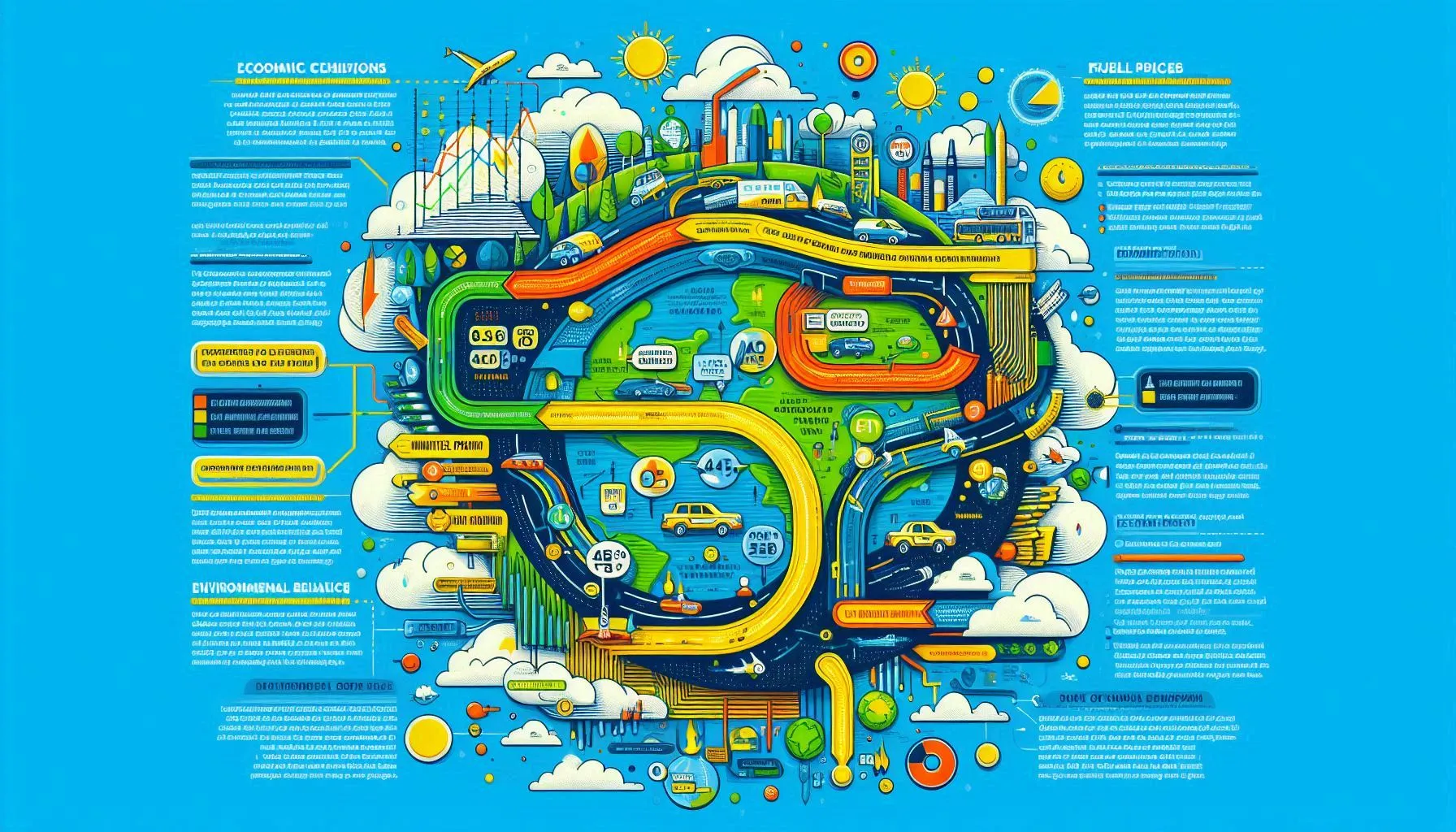
Introduction to the Automotive Market in 2024
The automotive market in 2024 has witnessed significant evolution, driven by technological advancements and shifting consumer preferences. As the industry continues to navigate the post-pandemic landscape, manufacturers and consumers alike are adapting to new realities. Among the most salient trends this year is the increasing demand for electric vehicles (EVs). With heightened awareness regarding environmental impacts and stricter emissions regulations, buyers are encouraged to consider energy-efficient options. This shift not only reflects a change in consumer preferences but also underscores a collective commitment toward sustainability within the automotive sector.
In addition to the surge in EV popularity, the integration of smart technology in vehicles has revolutionized the driving experience. Features such as automated driving systems, advanced safety technologies, and in-car connectivity are now commonplace, elevating consumer expectations for functionality and convenience. Consequently, automakers are investing heavily in research and development, aiming to enhance these technological offerings and streamline production. This competitive atmosphere is crucial, as consumers increasingly seek vehicles that offer both performance and a seamless connection to their digital lifestyles.
The strategies adopted by manufacturers in 2024 are reflective of these evolving market dynamics. Companies are focusing on diversification, offering a broader range of models that cater to varying customer needs, from compact cars to larger SUVs. The rise of subscription services and flexible ownership models also indicates a shift in how consumers are approaching automotive purchases. As buyers seek more convenient, cost-effective solutions, the traditional model of car ownership is being reexamined.
Overall, the automotive market in 2024 represents a transformative period, characterized by increasing electrification, technological innovation, and changing consumer behaviors. This backdrop paves the way for a thorough analysis of the best-selling cars of the year, exploring how these elements have influenced sales trends and consumer choices in today’s dynamic market environment.
Factors Influencing Car Sales in 2024

The automotive industry is shaped by a multitude of factors that collectively impact car sales. As we approach 2024, understanding these influences becomes critical for stakeholders in the sector. One of the primary determinants is the state of the economy, which plays a crucial role in consumer purchasing power. A robust economic environment typically results in increased consumer confidence, leading to higher vehicle sales. Conversely, economic downturns can significantly constrain spending, making it essential for manufacturers to adapt their strategies accordingly.
Fuel prices also exert a notable influence on car sales, particularly concerning consumer preferences between fuel-efficient vehicles and traditional combustion engines. As fuel prices rise, there is a marked shift in consumer interest towards alternative fuel vehicles, including hybrids and electric cars. This shift not only reflects economic considerations but also aligns with growing environmental consciousness among buyers, prompting manufacturers to enhance their offerings in the eco-friendly segment.
Moreover, environmental regulations significantly impact the automotive landscape as governments worldwide adopt stricter emissions standards. These policies encourage automakers to invest in cleaner technologies, thus shaping consumer perception and demand. As consumers become increasingly aware of their environmental footprint, the appeal of electric vehicles continues to rise, affecting the sales dynamics of traditional vehicles.
Lastly, consumer buying behavior continues to evolve, influenced by various social trends and technological advancements. The preference for online shopping and digital tools plays a significant role in how consumers approach car buying. Online reviews, social media influencers, and innovative marketing strategies have transformed the buyer’s journey, making it imperative for dealerships and manufacturers to stay attuned to these shifts to remain competitive in the market.
In summary, the interconnectedness of economic factors, fuel prices, regulatory frameworks, and consumer behavior substantially shapes car sales in 2024, particularly as the market witnesses a notable rise in the demand for electric vehicles compared to traditional combustion engines.
Top Categories of Best-Selling Cars

In the dynamic automotive market of 2024, the categorization of the best-selling cars reveals distinct trends across various segments, each driven by consumer preferences and technological advancements. Among these categories, SUVs have solidified their position as a dominant force, accounting for a significant share of the overall sales. With models like the Toyota RAV4 and Honda CR-V leading the pack, their popularity can be attributed to a blend of spacious interiors, versatile features, and enhanced safety ratings, which appeal to families and individuals alike.
Sedans, once the staple choice for many, have seen a shift in consumer interest but still hold a loyal customer base. The Honda Accord and Toyota Camry remain among the top-selling sedans in 2024, recognized for their fuel efficiency, comfort, and reliability. As manufacturers innovate with hybrid technology, these models are adapting to meet the changing demands of eco-conscious buyers, thus maintaining their relevance in the market.
In contrast, the truck segment continues to thrive, with the Ford F-150 and Chevrolet Silverado remaining the best-selling models. The strong performance of these vehicles can be attributed to their rugged capability, towing power, and continuous enhancements in performance technology. This resilience is further mirrored in the growing appeal of electric trucks, such as the Rivian R1T, which caters to both environmentally conscious consumers and traditional truck enthusiasts seeking modern alternatives.
Additionally, the rise of electric vehicles (EVs) has reshaped consumer perspectives in 2024, with models like the Tesla Model 3 and the Ford Mustang Mach-E capturing significant market attention. Their success is driven by advancements in battery technology, charging infrastructure, and consumer incentives promoting sustainability. Each category showcases unique attributes driving sales, ensuring robust demand across the automotive landscape.
Trending Aesthetic and Functional Features
In 2024, the landscape of top-selling cars is heavily influenced by a myriad of aesthetic and functional features that resonate with modern consumer demands. The design elements have evolved, prioritizing sleek, aerodynamic profiles which not only enhance the visual appeal but also improve fuel efficiency. Consumers are increasingly drawn to vehicles that embody sophistication, with manufacturers opting for streamlined shapes, bold lines, and vibrant color palettes to catch the eye of prospective buyers.
Interior design in 2024 has also taken a significant leap forward. Automakers are focusing on creating spacious environments filled with premium materials and ergonomic layouts that cater to comfort and convenience. Technological integration plays a vital role, with features such as advanced infotainment systems, customizable ambient lighting, and multi-zone climate control becoming standard. Buyers now expect seamless connectivity through smartphone integrations and intuitive interfaces, which enhance the driving experience and make navigation more user-friendly.
Safety technologies are indeed at the forefront of the modern vehicle purchasing decision. Features such as adaptive cruise control, lane-keeping assistance, and automated emergency braking systems are now prioritized by consumers who value safety. Additionally, innovations like 360-degree cameras, blind-spot monitoring, and robust airbag systems are interpreted as essential elements that protect both passengers and pedestrians alike. As new technologies emerge, manufacturers continually adapt their offerings to meet these evolving standards, proving that safety and convenience must coalesce in today’s automotive market.
Ultimately, as aesthetics and functional features become more intertwined, it is clear that the demand for cars in 2024 is shaped significantly by an expectation for beauty paired with practicality. The convergence of these elements influences both consumer preferences and purchasing decisions, marking a pivotal shift in the automotive industry.
Electric and Hybrid Vehicles: The Future of Car Sales
The automotive landscape in 2024 is witnessing a significant transformation, with electric and hybrid vehicles rising to the forefront of car sales. As concerns over climate change and fuel consumption intensify, more consumers are shifting their preferences toward sustainable modes of transportation. This growing emphasis on sustainability has led manufacturers to accelerate the development and production of electric and hybrid models, fundamentally altering market dynamics.
In 2024, several leading electric and hybrid models have captured consumer interest and sales momentum. Popular electric vehicles (EVs) such as the Tesla Model 3 and the Ford Mustang Mach-E continue to dominate the market, thanks to their impressive range, technological advancements, and robust charging infrastructure. Additionally, hybrid options, including the Toyota Prius and Honda Insight, appeal to buyers seeking a balance between fuel efficiency and traditional driving experiences. The increasing availability of diverse models from various manufacturers is making it easier for consumers to find vehicles that meet their specific needs and preferences.
The rise of electric and hybrid vehicles is reshaping not only consumer expectations but also the overall automotive market. As driver preferences increasingly lean towards eco-friendly options, automotive companies are re-evaluating their strategies to prioritize sustainability. This shift has led to intensified competition among manufacturers to innovate and deliver high-performing vehicles that are both environmentally responsible and economically viable. Additionally, government incentives and rebates for EV purchases are further driving the transition towards electric and hybrid vehicles, appealing to a wider demographic of consumers.
As we move forward, it is evident that electric and hybrid vehicles will play a pivotal role in the automotive sector. With advancements in battery technology and increasing public awareness of sustainability issues, these vehicles are not only poised for continued growth in sales but are also shaping the future of personal transportation.
Comparison of Domestic vs. International Brands
The automotive market for 2024 presents a compelling landscape, showcasing the ongoing rivalry between domestic and international car brands. Sales performance serves as a critical indicator of this competition, illustrating how brand loyalty, marketing strategies, and perceived value influence consumer choices. Domestic brands, often steeped in a legacy of familiarity and national pride, have cultivated a solid customer base that appreciates their reliability and service. Notably, these brands leverage marketing campaigns that emphasize their historical presence and contributions to local economies. This strategy fosters a sense of loyalty among consumers who may prefer to support local businesses, leading to significant sales in core markets.
On the other hand, international brands bring a diverse array of innovations and global perspectives to the table. These manufacturers often excel in advanced technology, fuel efficiency, and electric vehicle offerings. Their marketing strategies frequently position them as pioneers in sustainable practices, appealing to environmentally conscious consumers. This has been timely as consumers increasingly prioritize eco-friendliness, allowing international brands to penetrate markets where they may have previously held little influence. Furthermore, the global nature of these brands allows for a rich blend of cultural contexts, enabling them to cater to various consumer preferences effectively.
Perceived value plays a pivotal role in choosing between domestic and international brands. While domestic manufacturers may benefit from favorable pricing and a reputation for durability, international brands often emerge with a profile of prestige and cutting-edge technology, leading to a diversified appeal. These factors contribute to fluctuating sales figures as brands adapt to changing consumer expectations. In the competitive automotive market of 2024, understanding the dynamics of domestic versus international brands highlights the broader trends that shape consumer behavior and ultimately influence automotive sales performance.
Insights from Industry Experts
As the automotive landscape continues to evolve, industry experts provide valuable insights regarding expectations for the top-selling cars of 2024. Analysts are closely scrutinizing several emerging trends that may significantly influence buying behaviors, production, and market dynamics. One prominent trend is the increasing consumer preference for electric vehicles (EVs). According to a leading automotive analyst at a prestigious market research firm, “The shift towards sustainable transportation is no longer a mere suggestion; it is a requirement. Data indicates that sales of electric cars are set to surpass traditional gas-powered vehicles in key markets by 2024.”
Furthermore, experts note that millennials and Gen Z consumers are becoming the driving force behind the car buying market. “These demographic shifts are telling us that connectivity, sustainability, and technology play crucial roles in purchasing decisions. Manufacturers that adapt to these preferences will likely dominate the market,” states an automotive industry consultant. This may lead to an increase in vehicles that emphasize advanced technology, including intricate infotainment systems and safety features.
In addition to technological advancement and sustainability, the role of economic factors cannot be overlooked. A well-known economist within the sector remarked, “Interest rates and economic conditions will affect disposable income, which could influence consumers’ willingness to invest in a new vehicle. Brands that offer competitive pricing and financing options will likely see better sales performance.” This underscores the significance of market adaptability and pricing strategies as essential components for success in a changing landscape.
Consolidating these insights, automotive experts are enthusiastic yet cautious in their forecasts for 2024. They stress the importance of staying ahead of industry trends while maintaining a keen awareness of economic shifts. The upcoming year may well be a transformative period for the automotive sector, setting the stage for new best-sellers and innovative offerings.
Consumer Reviews and Feedback

Consumer reviews play an integral role in shaping perceptions about vehicles. For the top-selling cars of 2024, feedback from car owners provides valuable insights into the actual experience of daily driving and ownership. Many drivers have expressed satisfaction with the impressive features, safety ratings, and fuel efficiency that these models offer. For instance, one noteworthy vehicle has been lauded for its spacious interior and advanced technology, allowing for a comfortable ride and easy navigation.
In particular, consumers have been consistent in praising the user-friendly infotainment systems, which enhance the overall driving experience. The ability to seamlessly connect smartphones, receive real-time traffic updates, and access various applications has struck a chord with many users. Furthermore, numerous reviews commend the dependability and build quality of these vehicles, highlighting their robust engines and reliable performance under various driving conditions.
However, alongside the accolades, some criticisms have emerged from the consumer feedback landscape. Certain drivers have reported issues related to aftermarket services and the availability of spare parts, with a few customers indicating longer waiting times for repairs than expected. Additionally, some users have expressed dissatisfaction with fuel consumption in certain models, suggesting that while the car performs well, it could be more economical. This feedback emphasizes the importance of not only initial impressions but also long-term ownership experiences.
It’s clear that consumer insights significantly influence the automotive market. As prospective buyers research the best-selling cars of 2024, they should consider both the positive experiences and potential drawbacks reported by current owners. This comprehensive perspective enables informed decisions, ensuring that expectations align with actual ownership experiences.

Conclusion: The Landscape of Car Sales Moving Forward
As we reflect on the top-selling cars of 2024, it becomes evident that the automotive industry is undergoing significant transformations driven by evolving consumer preferences and technological advancements. The rising popularity of electric vehicles (EVs) exemplifies a profound shift in buyer sentiment, where sustainability and environmental considerations are increasingly prioritized. This trend indicates that manufacturers will likely respond by expanding their electric offerings, leading to a more competitive landscape focused on green technology.
Moreover, advanced driver-assistance systems (ADAS) continue to gain traction, shaping the expectations of consumers. Features such as autonomous driving capabilities and enhanced safety protocols are becoming more prevalent, thus altering the criteria against which buyers evaluate their vehicle options. As technology progresses, it is anticipated that these features will transition from luxury add-ons to standard equipment in many models.
Furthermore, the emergence of digital sales platforms has transformed how vehicles are marketed and sold, allowing consumers to engage in a more streamlined and convenient shopping experience. As these platforms gain robustness, traditional dealership models may need to adapt or innovate to stay relevant. The competition among automakers will also be influenced by market disruptions stemming from economic fluctuations and changing regulatory frameworks, particularly in relation to emissions standards.
In conclusion, the automotive landscape is poised for continued evolution, characterized by the prioritization of sustainability, the integration of digital technologies, and the constant reevaluation of consumer needs. Understanding these trends will be crucial for stakeholders across the industry as they navigate the complexities of future car sales. By recognizing and adapting to these changes, manufacturers can better position themselves to thrive in an increasingly competitive market.

Leave a Reply